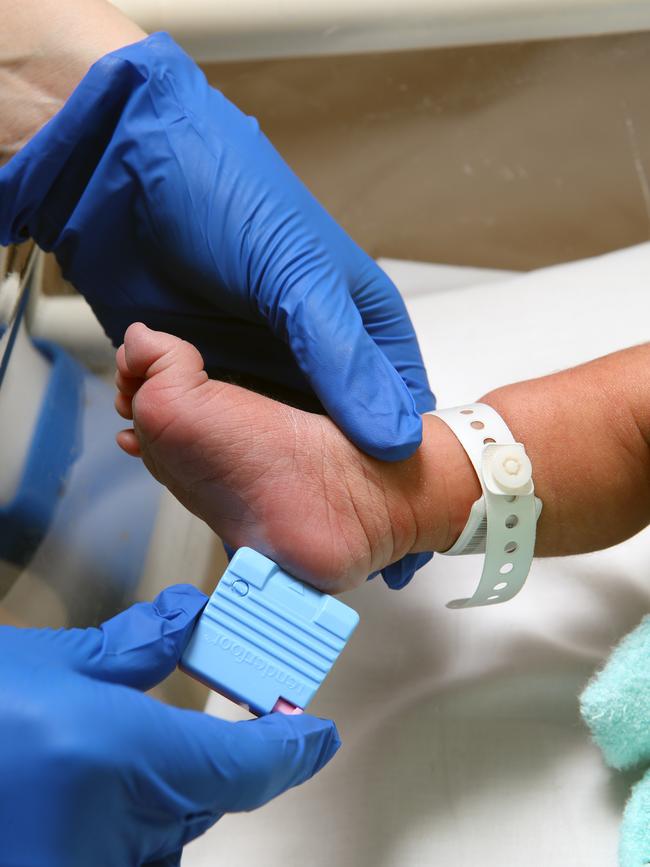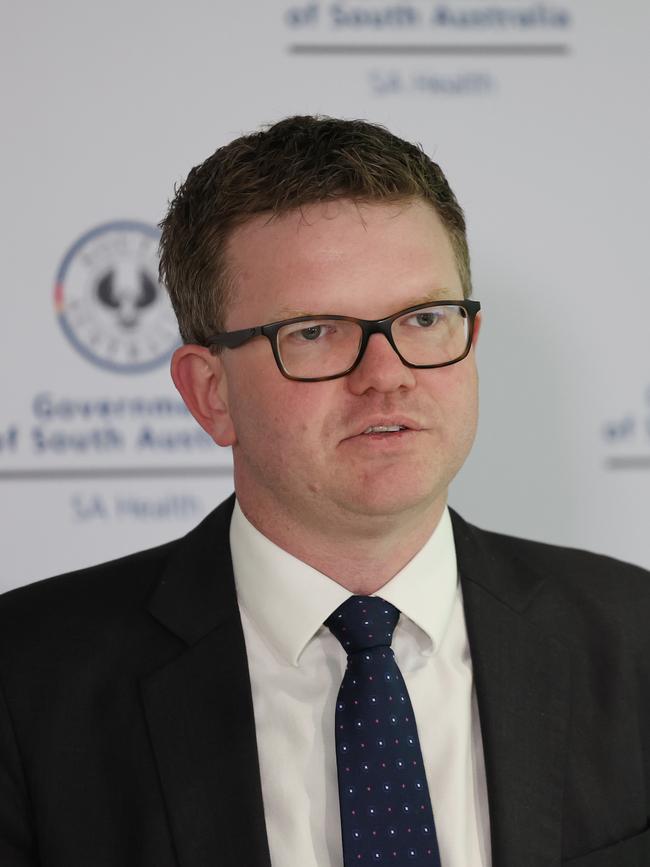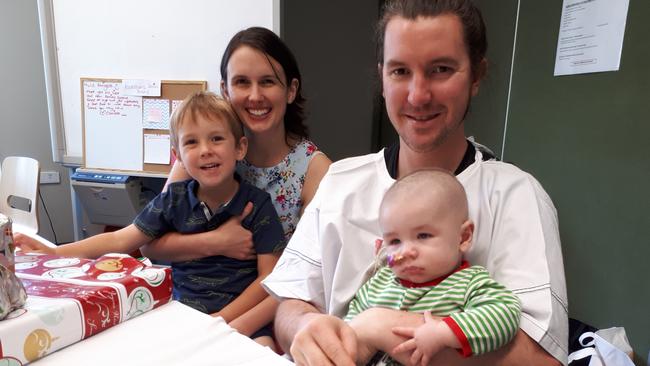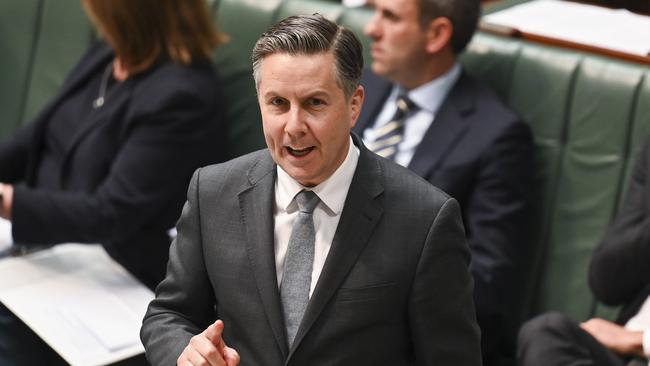More diseases added to newborn screening tests to save lives
Brotherly love runs deep in this Adelaide family – find out how three-year-old Blake saved the life of his baby brother Max.
SA News
Don't miss out on the headlines from SA News. Followed categories will be added to My News.
Brotherly love runs deep in an Adelaide family where big brother Blake, aged 3, donated healthy blood stem cells to save his baby brother Max’s life.
Now other families who have children with the same disorder as Max will be fast-tracked to a diagnosis, thanks to two additional life-threatening genetic diseases being added to newborn screening.
The state government has invested $424,000 to acquire multiplex neonatal screening equipment using complex DNA gene testing technology to identify babies who have spinal muscular atrophy or severe combined immunodeficiency.
The federal government has provided $1.5m over four years for the extra testing in SA and to ensure national consistency in screening across Australia.


Babies with spinal muscular atrophy have the best outcome when the disease is diagnosed within the first 14 days of life.
Severe combined immunodeficiency can be fatal without early intervention such as a stem cell transplant.
The additional testing is being incorporated into SA’s existing newborn screening program, which tests babies for six major groups of treatable disorders within 48 hours of birth across SA, part of Northern Territory and Tasmania. The equipment extracts a baby’s DNA from a single dried blood spot.
At almost four months, Max ended up in hospital.
On his third hospital stay, he was diagnosed with severe combined immunodeficiency (SCID) and needed a bone-marrow transplant to survive.
Max found his perfect match in his brother Blake, which their mother Emma described as “fantastic, but terrifying”.

At the age of 3, Blake donated healthy blood stem cells to save his brother’s life.
In October 2017, aged 7½ months, Max had his transplant. He spent another 88 days in hospital, staying in an isolated room to protect his weakened immune system, with only his parents able to visit.
On Christmas Day 2017, Max and Blake were finally reunited – the first time the pair had seen each other since Max’s diagnosis in August. Since Max was discharged from hospital in January 2018, he has gone from strength-to-strength, with his recent six-year review showing he has excellent immune function.
Mum Emma says Max and Blake share a deep bond.
“We are delighted that SCID is being added to the newborn screening test – it is something that Max’s dad and I have been advocating for through Immune Deficiencies Foundation Australia,” she said.
“While it won’t change the long and gruelling journey we had with Max, it will save other families having to go through the same experience in the future and that is something we feel strongly about.
“This will allow for a much faster diagnosis and treatment, both of which are essential to ensure babies with these conditions get the best outcome.”
State Health Minister Chris Picton said advocates have been asking for spinal muscular atrophy and severe combined immunodeficiency testing for years.
“We have listened – these tests will save lives,” he said.
“Adding these conditions to the routine panel of newborn screening will provide life-changing treatment to those affected babies and provide families with additional peace of mind.”
Federal Health Minister Mark Butler said the move would deliver a nationally consistent approach to newborn bloodspot screening.

“The Albanese Government is delivering on our election commitment to put an end to the newborn screening postcode lottery by making sure every baby born in Australia has access to the same screening program,” he said.
“Newborn screening will not only save lives but will deliver better outcomes through early intervention.”




